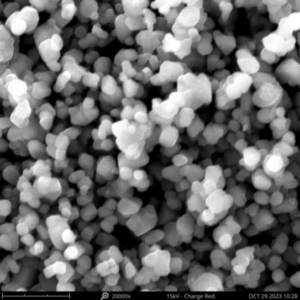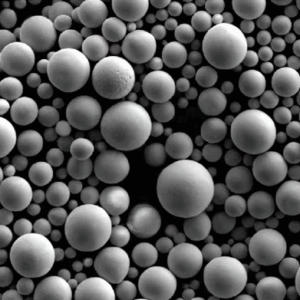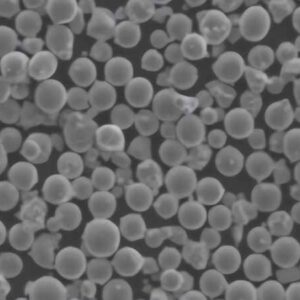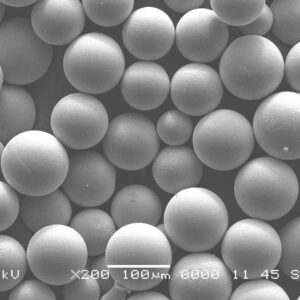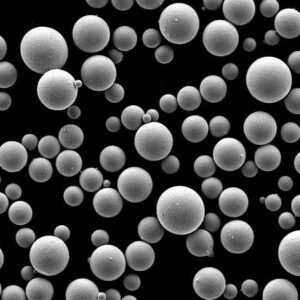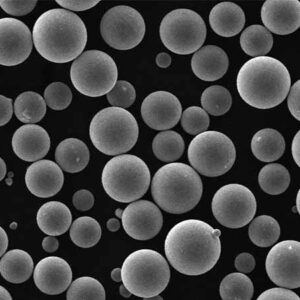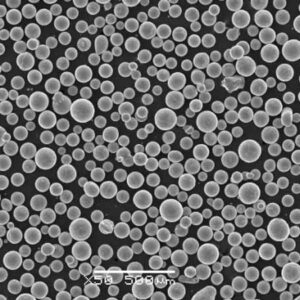Overview
Niobium powder is a metallic powder made from niobium metal. Niobium, also known as columbium, is a chemical element with the symbol Nb and atomic number 41. It is a soft, grey, ductile transition metal that is often found in niobite and columbite ores.
Some key details about niobium powder:
- It is available in various purity grades from 99% to 99.99% pure niobium
- Particle sizes range from 1 micron to 150 microns for different applications
- It has high strength, good workability, and corrosion resistance
- Main applications are in welding products, superconductors, superalloys, optics, electronics
- Global production is estimated to be around 60,000 to 70,000 tonnes per year
Types of Niobium Powder
| Type | Description |
|---|---|
| Pure Niobium | 99% to 99.9% Nb, low oxide content |
| Alloyed Niobium | Nb alloys with Ti, Zr, Hf, W, Mo etc. |
| Niobium Hydride | Nb + atomic H, higher hydrogen storage capacity |
| Niobium Carbide | Niobium carbide powder |
Composition of Niobium Powder
| Constituent | Weight % | Role |
|---|---|---|
| Niobium | >99% | Principal component |
| Oxygen | <0.5% | Impurity picked during manufacturing |
| Carbon | <0.08% | Impurity from ore or process |
| Nitrogen | <0.03% | Impurity picked during manufacturing |
| Hydrogen | <0.015% | Impurity picked during manufacturing |
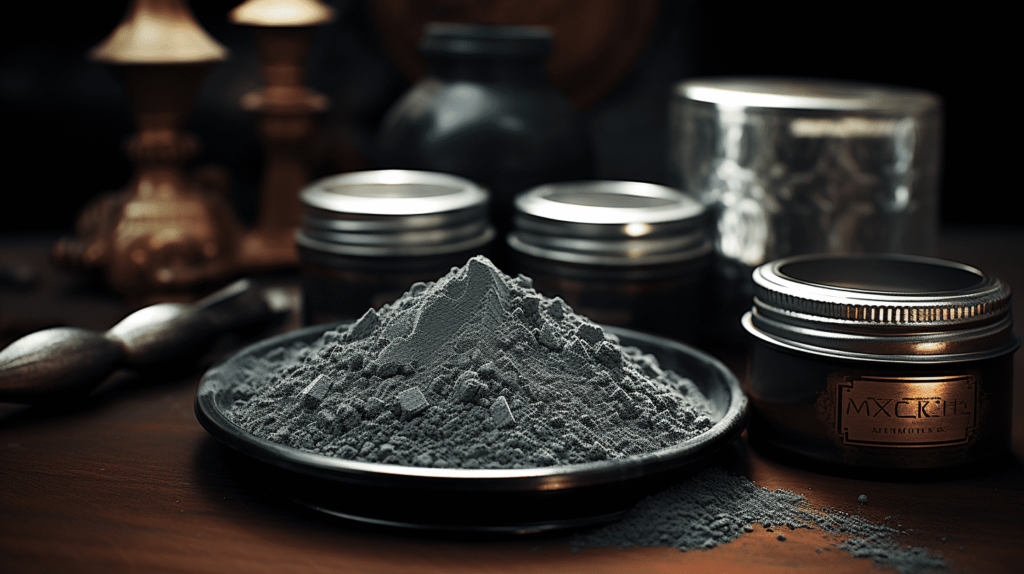
Properties of Niobium Powder
| Property | Details |
|---|---|
| Color | Greyish white |
| Density | 8.57 g/cm3 at 20°C |
| Melting Point | 2477°C |
| Boiling Point | 4744°C |
| Thermal Conductivity | 53 W/mK at 20°C |
| Electrical Resistivity | 15 μΩ.cm at 20°C |
| Young’s Modulus | 105 GPa |
| Poisson’s Ratio | 0.4 |
| Mohs Hardness | 5 |
Characteristics of Niobium Powder
- High purity powder with low oxygen and nitrogen content
- Good powder flow and compaction properties
- Stable at high temperatures with slow oxidation rate
- Compatible with pressing and sintering steps
- Resistant to chemical corrosion in many environments
- Can be alloyed with other metals to customize properties
- Available in standard and customized particle size distributions
- Spherical, irregular and dendritic particle morphologies
Applications of Niobium Powder
| Area | Usage |
|---|---|
| Steel Additive | Microalloying agent, grain refiner |
| Superalloys | Components for turbines, engines |
| Welding | Arc welding electrodes coatings |
| Optics | Optical glasses, camera lenses |
| Electronics | Capacitors, superconducting magnets |
| Jewelry | Alloys with gold or silver |
| Aerospace | Rocket subsystems, combustion chambers |
| Automotive | Fuel cell components, exhaust systems |
Niobium Powder Specifications
| Parameter | Available Grades |
|---|---|
| Purity | 99% to 99.995% |
| Particle Size | 1 micron to 150 microns |
| Morphology | Spherical, irregular, dendritic |
| Apparent Density | 2 to 5 g/cm3 |
| True Density | 8.4 to 8.57 g/cm3 |
| Flow Rate | Good flow for most powder sizes |
| Compressibility | Up to 65% of true density |
| Common Contaminants | O, C, N, H < 1000 ppm total |
| Powder Production Method | Hydriding/dehydriding process |
Niobium Powder Suppliers and Pricing
| Supplier | Location | Indicative Pricing |
|---|---|---|
| H.C. Starck | Germany, US | $50 to $300 per kg |
| CBMM | Brazil | $75 to $500 per kg |
| Niobec | Canada | $100 to $600 per kg |
| Jien Nickel | China | $30 to $250 per kg |
Pricing varies based on purity, particle size, order quantity and location. Customization and processing increases cost.
Advantages of Niobium Powder
- High strength and hardness values
- Retains strength and ductility at elevated temperatures
- Resistant to mechanical wear and abrasion
- Withstands corrosive environments
- Good electrical and thermal conductivity
Limitations of Niobium Powder
- More expensive than steel powders
- Sensitive to contamination during processing
- Brittle niobium oxides start forming over 250°C
- Powder can be pyrophoric if very finely divided
Niobium Powder Compared to Other Metal Powders
Versus Tantalum Powder
- Niobium has slightly lower density than tantalum
- Niobium powder is cheaper than tantalum powder
- Both have high melting points, good electrical conductivity
- Tantalum oxide is more stable compared to niobium oxide
- Niobium alloys easier with iron-group metals
Versus Chromium Powder
- Niobium has much higher density than chromium
- Niobium retains strength better at high temperatures
- Chromium powder is more affordable than niobium powder
- Both have high melting points and are refractory metals
- Chromium oxide scale is more protective than niobium oxide
Versus Tungsten Powder
- Tungsten has the highest melting point among metals
- Tungsten powder is cheaper than niobium powder
- Niobium powder has slightly better compressibility
- Both are relatively dense metals with good thermal properties
- Tungsten is harder and more wear-resistant
Versus Molybdenum Powder
- Molybdenum has higher thermal conductivity than niobium
- Niobium powder has better flow characteristics
- Molybdenum retains its strength at extremely high temperatures
- Both metals have relatively low thermal expansion
- Molybdenum powder is more affordable than niobium
Versus Vanadium Powder
- Niobium has higher density and melting point
- Niobium powder has better compressibility
- Vanadium is stronger and harder at high temperatures
- Both are refractory metals that resist creep deformation
- Vanadium alloys more easily with titanium

FAQ
What are the different grades of niobium powder available?
Niobium powder is available in purities ranging from 99% to 99.995% pure niobium. Common grades are Nb-099 (99%), Nb-09995 (99.95%) and Nb-09998 (99.98%) with customized purities also possible.
What particle sizes of niobium powder are produced?
Usual particle size range is 1 micron to 150 microns. Finer powder down to 0.2 microns is made for selected applications. Larger powder up to 500 microns size can also be produced.
What shape is niobium powder particle?
Niobium powder particles can be near-spherical, irregular chunky or dendritic. Powders for pressing into products use spherical or irregular particles that have good flow and compact well.
Is niobium powder flammable or explosive?
Extremely fine niobium powder can be pyrophoric, catching fire in contact with air. Coarser powder is not flammable but very fine powder should be handled carefully.
How is niobium powder made?
Most niobium powder is produced from ferroniobium using the hydriding-dehydriding (HDH) process. In HDH process, niobium hydride powder is made first then decomposed to pure niobium powder.
What is oxygen and nitrogen content in niobium powder?
High purity niobium powder has less than 1500 ppm oxygen. Nitrogen content is typically less than 200 ppm. Low oxygen content reduces contamination during sintering.
What is the price range of niobium powder?
Niobium powder prices vary between $30 to $600 per kg approximately, influenced heavily by purity level, particle size range, order quantity, supplier margins etc.
What is niobium powder mainly used for?
The leading uses are in steel additives, superalloys, welding products, electronics, and superconducting applications. Many niche uses in space, glass, medicine, coins etc. exist as well.
Is niobium powder environmentally hazardous?
Niobium metal has very low toxicity levels and niobium powder is considered safe for industrial use with standard precautions to avoid dust hazards. No special environmental risks exist.
What standards apply to niobium powder?
ASTM B393 applies to niobium and niobium alloy powder compositions. Other niobium standards indirectly apply for powder specifications, testing methods etc. Some military and aerospace standards also exist.

